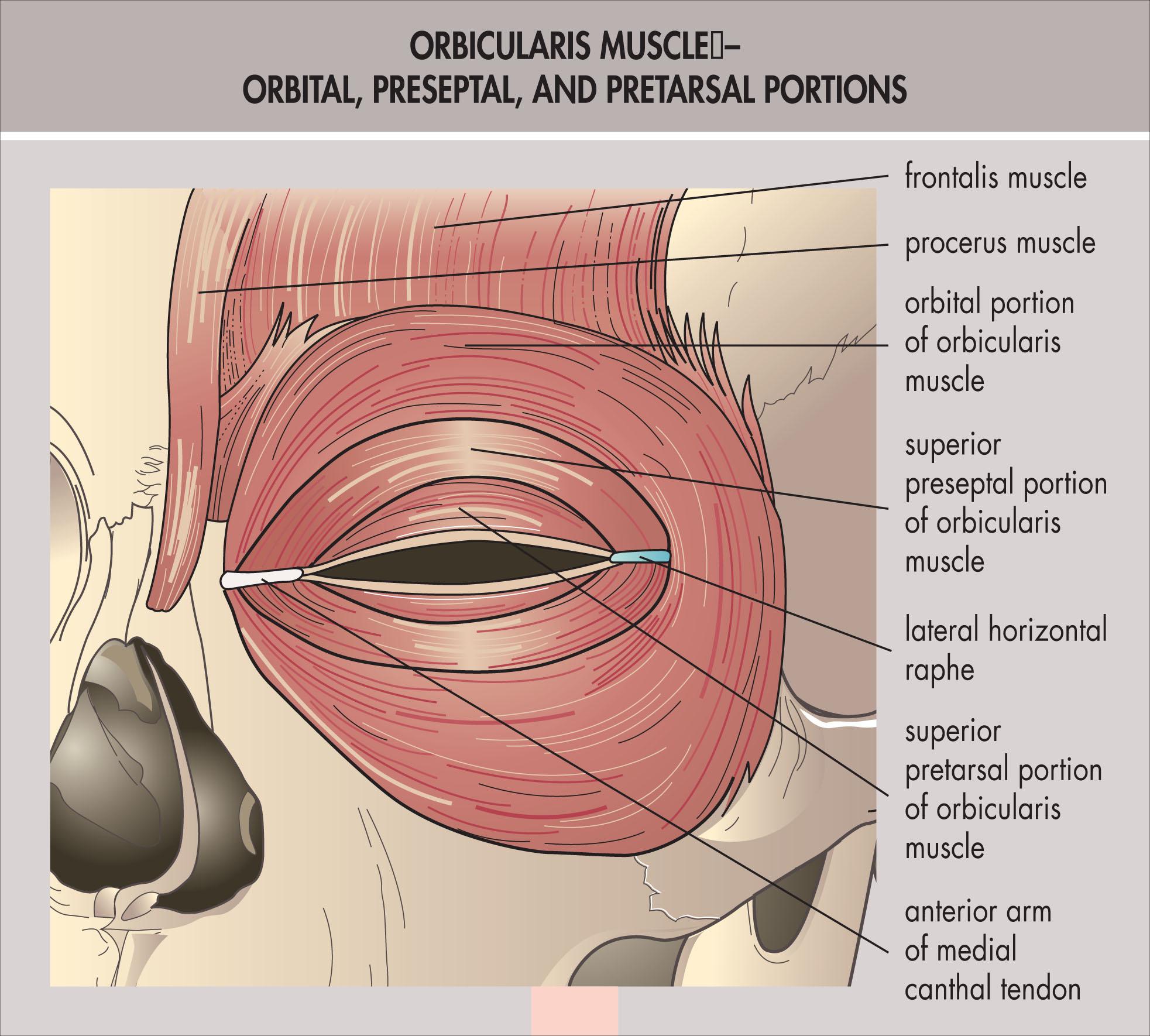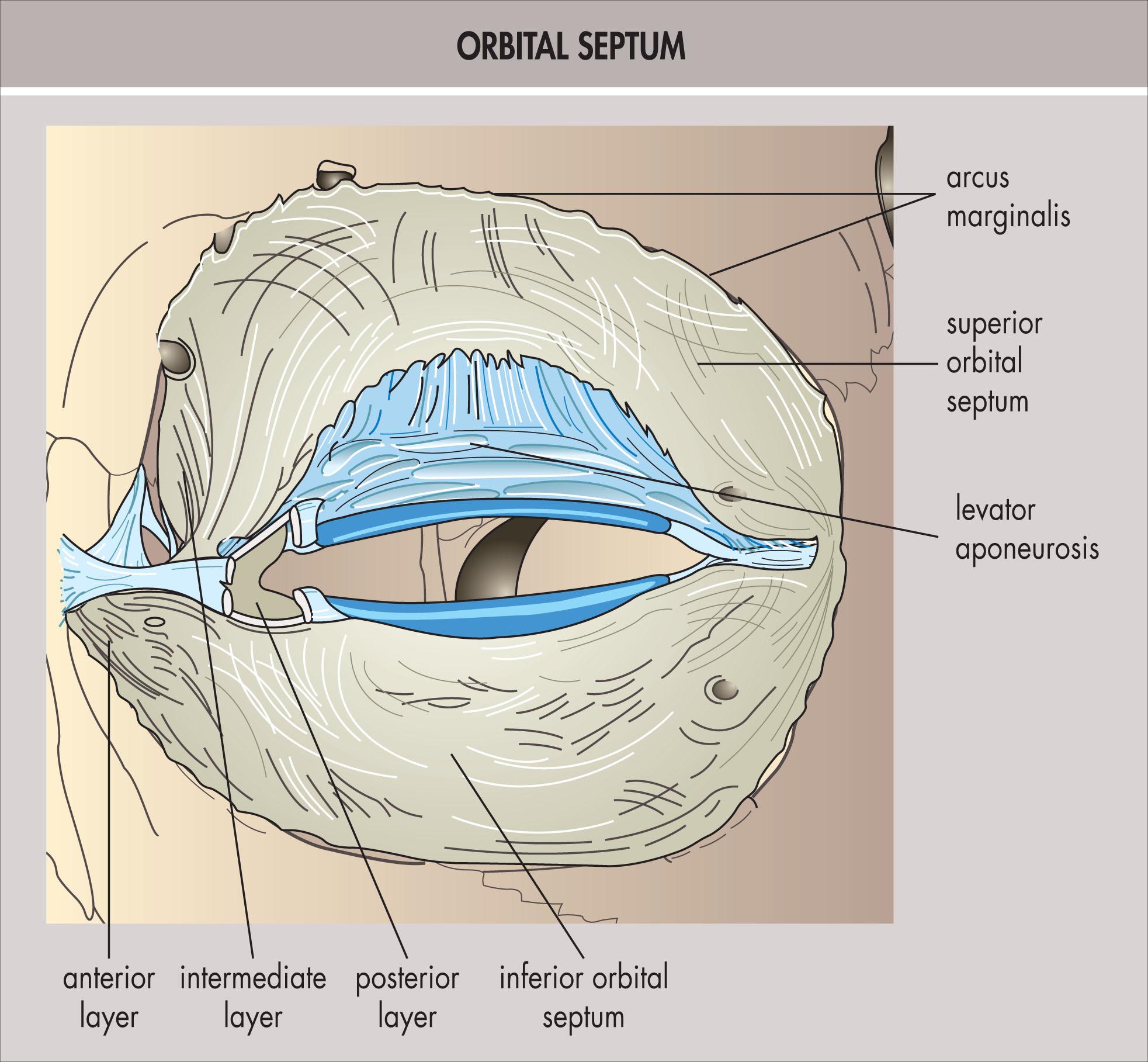Physical Address
304 North Cardinal St.
Dorchester Center, MA 02124
The eyelids are mobile, flexible, multilamellar structures that cover the globe anteriorly. They protect the ocular surface, spread the precorneal tear film, and help propel tears into the lacrimal drainage system. Anatomically, the eyelids are composed of an anterior lamella of skin and orbicularis muscle and a posterior lamella of tarsus and conjunctiva. Between the two are the eyelid retractors that elevate the upper eyelid.
The eyelids provide protection from desiccation and airborne foreign matter.
Anatomically, they contain both superficial musculocutaneous elements anteriorly and orbital components posteriorly.
The upper eyelid is a mobile, flexible structure that spreads the tear film over the corneal surface and helps to move excess tears to the medial canthus, where they drain into the lacrimal puncta.
The eyelid retractor muscles include the striated levator muscle and the accessory smooth Müller muscle.
The eyelids serve a vital function by protecting the globe. They provide elements of the precorneal tear film and help distribute tears over the corneal surface. The eyelids collect tears and propel them to the medial canthus, where they enter the lacrimal drainage system. The eyelashes sweep airborne particles from the front of the eye, and constant voluntary and reflex movements of the eyelids protect the cornea from injury and glare. Any aesthetic or reconstructive surgery on the eyelids requires a thorough knowledge of eyelid anatomy.
The eyelids undergo complex embryonic and fetal morphogenesis, resulting in functional eyelids at birth. In young adults, the interpalpebral fissure measures 10–11 mm vertically. That decreases to about 8–10 mm in adults. The horizontal length of the fissure is 30–31 mm. The upper and lower eyelids meet at an angle of approximately 60° medially and laterally. In the primary position, the upper-eyelid margin lies at the superior corneal limbus in children and 1.5–2 mm below it in adults. The lower-eyelid margin rests at the inferior corneal limbus.
The orbicularis oculi is a striated muscle that lies just below the skin. It is divided anatomically into three contiguous parts ( Fig. 12.1.1 ): orbital, preseptal, and pretarsal.

The orbital portion overlies the bony orbital rims. The palpebral portion overlies the mobile eyelid from the orbital rims to the eyelid margins. It is further divided topographically into the preseptal and pretarsal orbicularis. The preseptal portion of the muscle is positioned over the orbital septum in both the upper and lower eyelids. The pretarsal portion of the muscle overlies the tarsal plates. Contraction of these fibers aids in the lacrimal pump mechanism. Medially, the pretarsal fibers fuse to form the Horner muscle that helps maintain the posterior position of the canthal angle and may aid in the lacrimal pump mechanism.
The orbital septum is a thin, fibrous membrane that begins at the arcus marginalis along the orbital rim and merges into the anterior surface of the levator aponeurosis about 3–5 mm above the tarsal plate ( Fig. 12.1.2 ). In the lower eyelid, the septum fuses with the capsulopalpebral fascia several millimeters below the tarsus, and the common fascial sheet inserts onto the inferior tarsal edge.

Become a Clinical Tree membership for Full access and enjoy Unlimited articles
If you are a member. Log in here